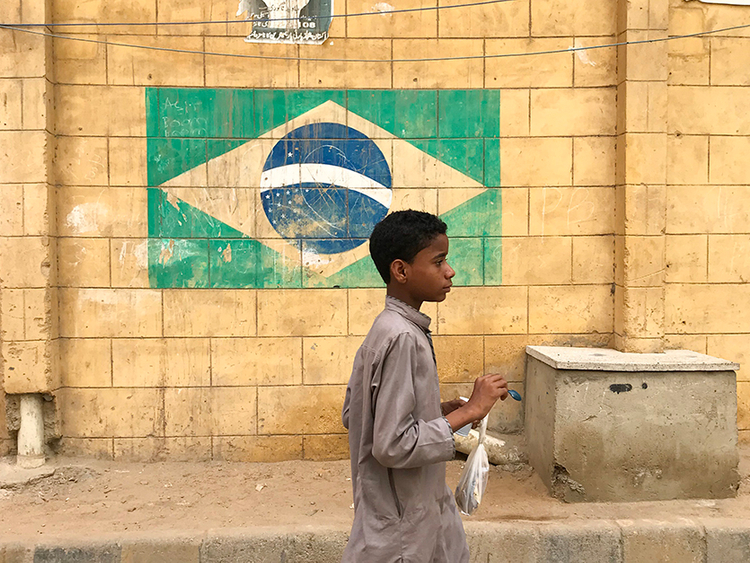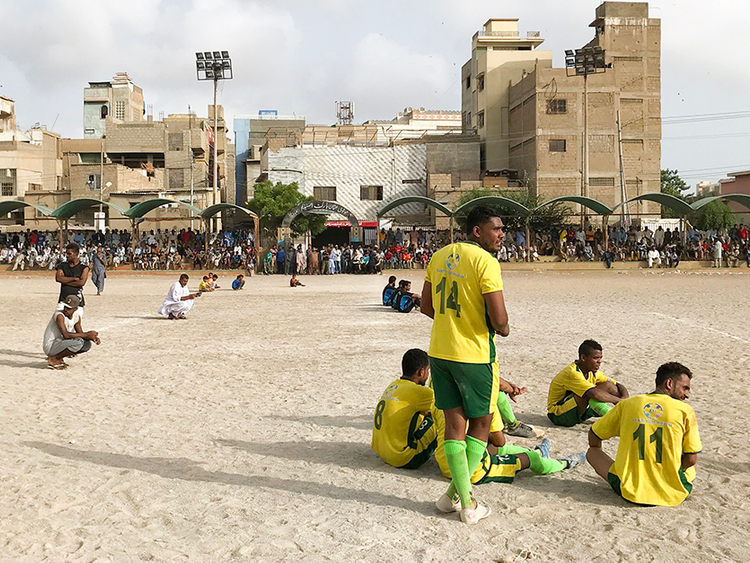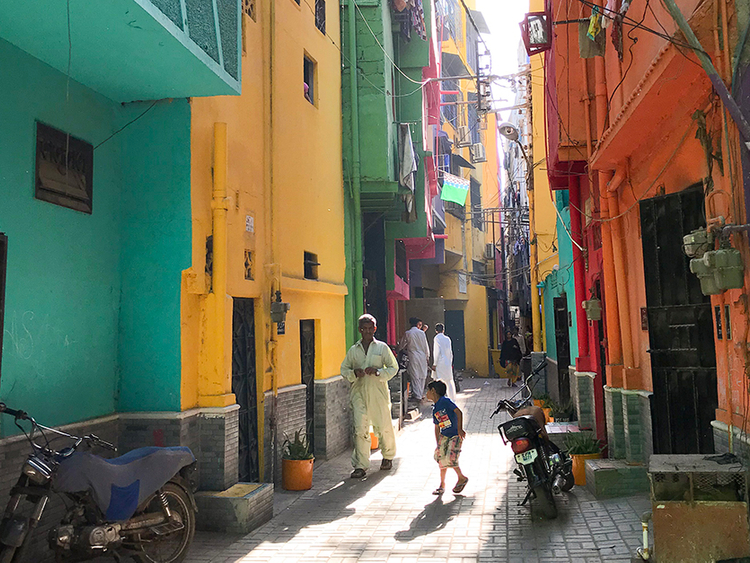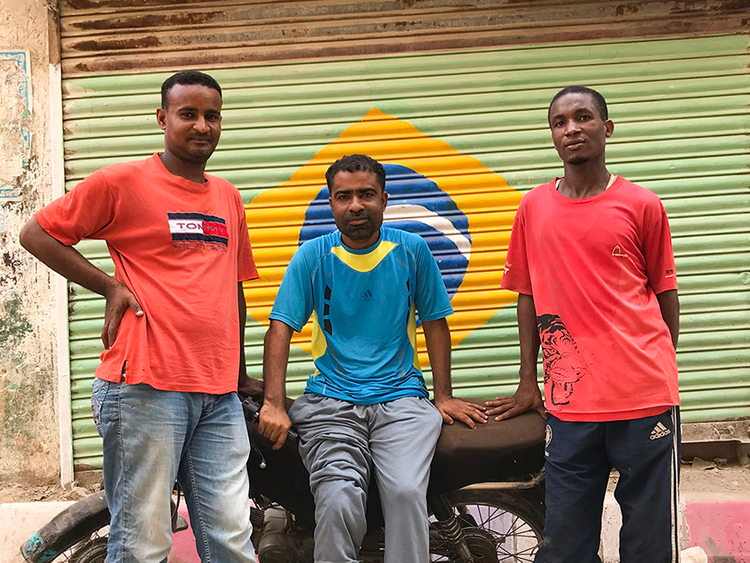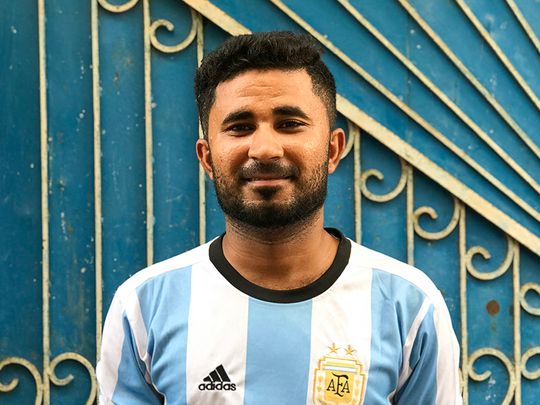
For many years Lyari, a suburb of Karachi, has had a fierce reputation for gang-related violence, drugs and all sorts of crime. However, despite all the negative press coming from Lyari, I’d always known that football was the most popular game among the local residents.
I got in touch with a local award-winning film-maker, Ahsan Shah, to show me around the area. His short film, Jaawar (meaning ongoing situation in Balochi language), won first prize in the category at the International Youth Creativity Awards in Bahrain in 2016.
I met Shah at the famous multicoloured Kiran Street in Lyari. He welcomed me into the area with: “Welcome to our Little Brazil.” I could see why the area got that title. The Brazilian flag was literally everywhere, the area’s colourful narrow alleyways accompanied by the vibrant street life easily conjured up images of favela life in Rio De Janeiro.
We started off our footballing adventure by walking on foot from Kiran Street to Mombasa Street. The street is named after the Eastern Kenyan port city. The first migrants to the area, the Sheedis, came from around that region during the early days of the slave trade.
The thoroughfare had now become the undisputed nerve centre of Lyari’s footballing excitement. The entire street was decked out with flags of all the big teams playing in the World Cup. Even the walls on both sides of the street were covered in murals of football players and teams.
Once in the area Shah took me to the rooftop of a friend’s building to see the excitement from above. Every household in the area had a flag mounted on top of its rooftop clearly indicating the team they were all supporting. The most popular of the lot were Brazil, Argentina and Portugal.
The Lyariwallas have a special place in their heart for the Brazilian football team because they believe the favela residents of places like Rio De Janeiro live through similar trials and tribulations and can easily relate to their own struggles.
After experiencing Lyari’s World Cup mania first-hand, Shah had one last location left to show me and that was the local football stadium. The stadium was packed to the seams to see a bunch of local league matches.
In one corner of the stadium two teams were battling it out in an intense penalty shootout while at the other end another two were warming up for their upcoming matches.
It was loud and chaotic but this was Pakistani football at its rawest and finest. Lyari’s love for football is raw and organic.
During my time in the neighbourhood I met kids on the street who were discussing the 1982 and 1986 football World Cups. In a cricket-crazy country such as Pakistan I couldn’t believe what I was experiencing.
It’s about time the media and the public stop viewing Lyari through the lens of drugs, violence and poverty. Instead they should celebrate and embrace this area and its people for their many talents and vibrant culture.



